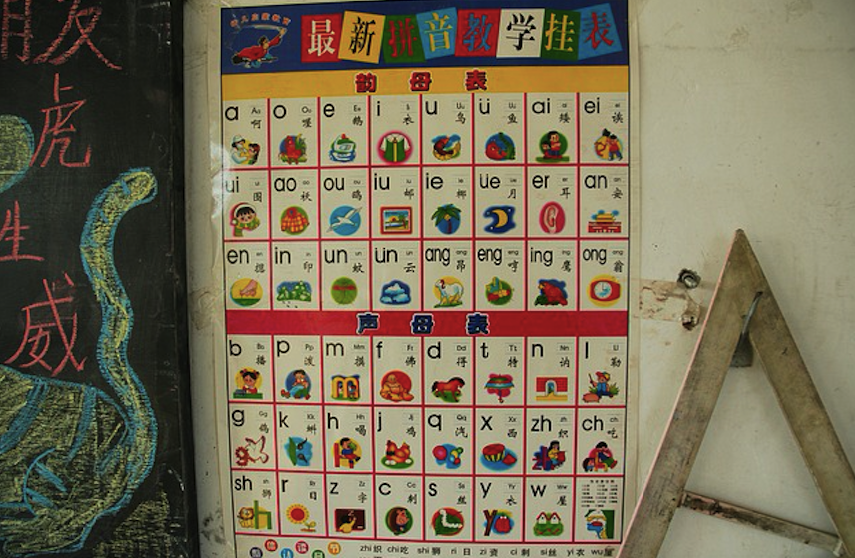If you are on this page, I assume that either you are interested in learning Chinese language or interested in knowing more about the language. As we all know this language is a mysterious language for any foreigner with a pictorial representation and tone based language. So, If you start learning Chinese, the first step would learn Pinyin, tones and Pinyin table. An interesting point to be noted is that Pinyin is not only for foreigners who want to learn Chinese but it is mandatory for native speakers to learn Pinyin nowadays. Even if you don’t know Chinese characters, one can type Pinyin to have a basic level communication with modern Chinese native speaker, though tones also matter to complete your communication. Let us learn how!
Before that let me introduce PinYin first. Hanyu Pinyin Romanization, often abbreviated to pinyin ( 拼音 -Pīnyīn ), is the official romanization system for Standard Chinese in mainland China and to some extent in Taiwan. PinYin is often used to teach Standard Mandarin Chinese, which is normally written using Chinese characters. The literal meaning of PinYin is ” Spell sounds” and helps in spelling out Chinese sounds. This was first used for foreigners to write down Chinese and then in 1950 PinYin was created and finally Chinese government officially spread using PinYin to improve the literacy in China.
The beauty of Chinese language depends on tones. PinYin without tones is incomplete. If you see about, Pinyin ( 拼音 ) is written as Pīnyīn with flat tones. To understand the pitch contours, the below picture gives a good guidance on which level each tone needed to start. This will help the learner a native accent to surprise native Chinese people.
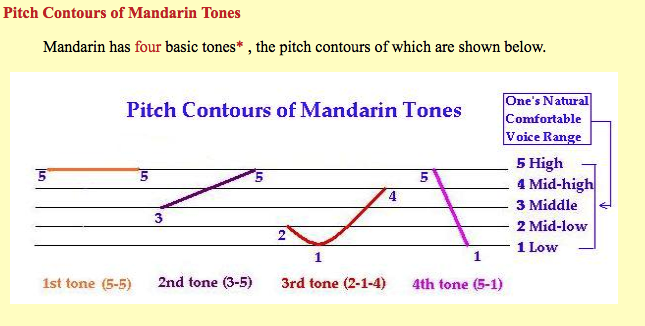
There are a total of 4 tones and 1 neutral tone as shown in the picture on the side, each tone has its own pitch. The following is the description of each tone
- The first tone is a Flat or High-Level Tone is represented by a macron (ˉ) – Example:Mā (妈)
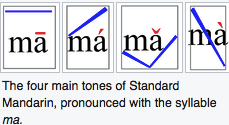
Picture source: Wikipedia - The second tone is a Rising or High-Rising Tone is denoted by an acute accent (ˊ) – Example: Má(麻)
- The third tone is a Falling-Rising or Low Tone is marked by a caron/háček (ˇ) - Example:mǎ (马)
- The fourth tone is a Falling or High-Falling Tone is represented by a grave accent (ˋ)-Example:Mà (罵)
- In addition, there is a fifth tone which is a Neutral Tone is represented by a normal vowel without any accent mark) – Example: Ma (吗 )
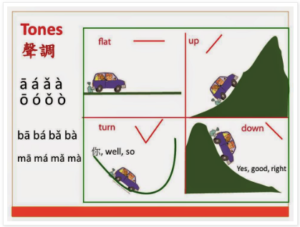
The side picture also gives a very good visualization on how the tomes will be and with a perfect example of a vehicle on a flat road, ramp up, ramp up and down, ramp down. The example is similar to “ma”, we used “ba”. Hence with this, we can generalize that these tones can be integrated with different syllables to create various Chinese characters.
Now that we discussed the tones, the next step is to know about the PinYin Table. The pinyin Chart is a complete listing of all Hanyu Pinyin syllables used in Standard Chinese. Each syllable in a cell is composed of an initial (columns) and a final(rows). An empty cell indicates that the corresponding syllable does not exist in Standard Chinese. There are a total of 409 sounds in Chinese and PinYin actually maps every single sound in Chinese language using the Pinyin chart. Once you master each and every sound in the PinYin chart which means you can actually pronounce every Chinese word in Chinese. Interesting isn’t it? Will you accept the challenge to master this?
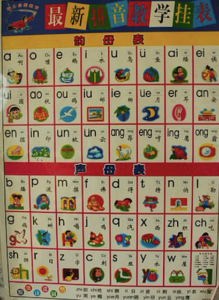
The table gives you a reference to understand the table but I suggest please go through the below reference weblinks for more comprehensive PinYin charts and videos which I myself used to learn Pinyin.
Resources:
- Comprehensive PinYin Chart from YoYo Chinese with audio to help listening tones- Click here
- PinYin Chart from Quickmandarin.com with audio- Click here
- Very good website to learn typing Pinyin – Click here
- Video of PinYin Pronunciation by YoYo Chinese with difficult PinYin explained by YangYang – Click here
- PinYin pronunciation well explained in this video – Click here
- Basics of PinYin explained by NihaoChina – Click here
- This tool is designed for test and practices mandarin Chinese – Click here
Follow me on
Twitter – @umkev
Facebook – @murali.today
Instagram – @umkev
Weibo – @umkev
